About 8.7 million species walk, run, crawl, swim, fly, and exist on our beautiful planet. Moreover, we can't even imagine how many are yet to be discovered. The millions of years of evolution have played some pretty cool tricks and created a variety of life that repeatedly surprises scientists. That's why we've made a top ten list of strange, bizarre, and alien-like creatures that you probably didn't think even exist. Nevertheless, when you find more about them on our top ten list, they will amaze you. So, let's dive together into this fascinating yet mysterious world and get to know our strange neighbors. Shall we?
10. Red-lipped Batfish
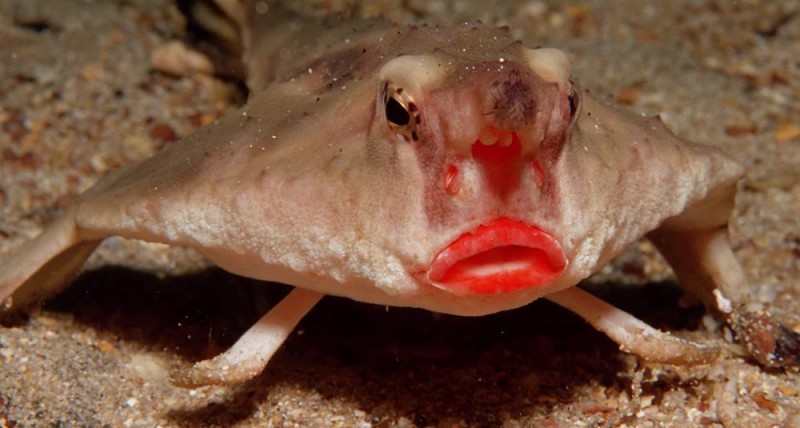 The most fierce-looking fish in the Galapagos Photo: YouTube screenshot
The most fierce-looking fish in the Galapagos Photo: YouTube screenshot
The most unusual creature, Red-lipped Batfish, is living in the cold waters of the Galapagos Islands. They can swim, but you're more likely to find them walking on the seafloor with the help of their fins that look more like toad limbs. These strange frog-like creatures got their name after lipstick-red pout mouth coloration. Wow, it's like they use some precious M.A.C. red lipstick!
In contrast to red lips is its brownish-gray body, perfect for blending with debris on the ocean floor. In the middle of its face lies Elysium - a horn covered with tiny hairs. They use this retractable appendage to attract prey. Ogcocephalus darwini got her scientific name in honor of famous scientist Charles Darwin, and they are endemic to the Galapagos. Fully grown specimens can reach up to ten inches. Interestingly, red-lipped Batfish has no predators, and its life span is about 12 years.
9. Aye-ayes
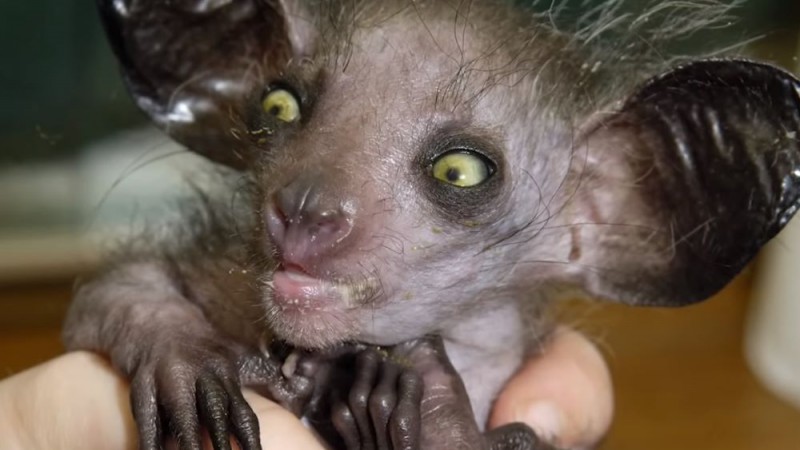 The world's biggest nocturnal primate Photo: YouTube screenshot
The world's biggest nocturnal primate Photo: YouTube screenshot
Aye-ayes is a rare strange-looking animal living only in Madagascar. Even though they don't look like primates, they are related to apes, chimpanzees, and humans. Aye-ayes avoid coming down to earth and spend most of their lives in rainforest trees. Their nests are spherical, with single entry holes located in the canopy of large trees. Those animals are dark brown or black, and they have a fluffy tail, bigger than their body.
Unfortunately, locals kill Aye-ayes on sight because they consider them bad omen and harbingers of death. Because of this and the systematic destruction of their natural habitat, their number has been significantly decreased, so today, the law protects them.
8. Blobfish
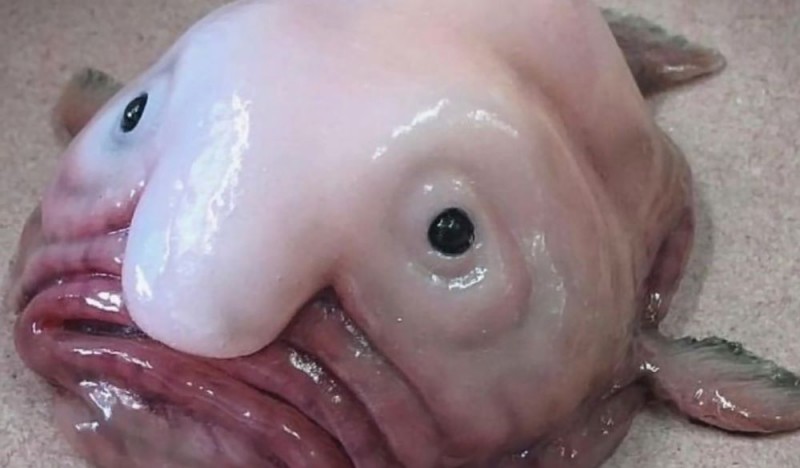 The world's ugliest animal Photo: YouTube screenshot
The world's ugliest animal Photo: YouTube screenshotFirst discovered in 2003, Blobfish was immediately given its name. And no, it's not a nickname, as this fish lives in an environment of extreme pressure. Therefore, this strange water creatures have no real skeleton or teeth and experience up to 120 times the dry land force. Only a few rare underwater pictures have ever been captured as Blobfish float around just above the seafloor. Since they have no predators, this species' only problem is accidental capture in deep-sea trawling nets.
Out of the water, they instantly die because they are built for the high-pressure oceanic environment. If you ever wondered if there's some contest for the most repulsive creature, well, there is our favorite. Blobfish was voted the "world's ugliest animal" in September 2013 with over 3000 online votes, racking up 795 of them.
7. Thorny Devil
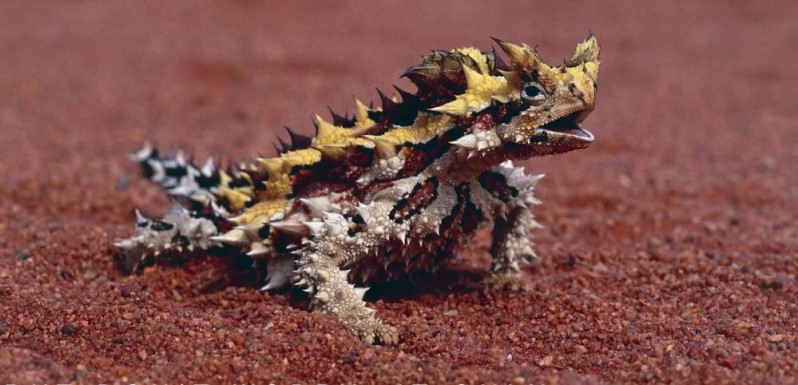 This little lizard possesses the "false head" Photo: YouTube screenshot
This little lizard possesses the "false head" Photo: YouTube screenshotThorny devils or dragons, as people often call them, are small lizards native to Australia. They have cones and shields on their bodies that serve as camouflage. In these cones, they store any water they come in contact with. Thorny devils are colored in camouflaging shades of desert brown sand tans. As the time of day changes, their skin turns to match and blend in with their environment.
These creatures are equipped with long tongues that help them catch ants. Thorny devils live 6 to 20 years in the wild, and to scare predators, they inflate their chests with air to appear larger. This little lizard possesses the "false head" made from soft tissue on the back of its neck. Thorny dragon employs a 'false head' as a decoy for predators while dipping its real one. Pretty cool yet chilling.
6. Glaucus Atlanticus or Blue Dragon
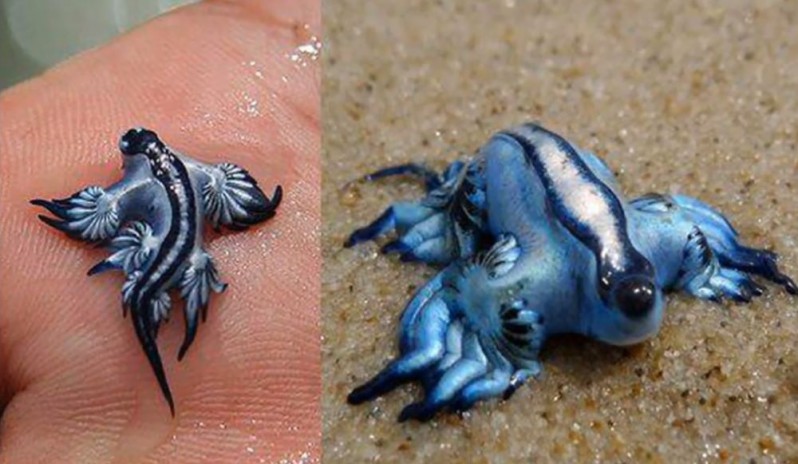 Blue dragons eat creatures many times their size Photo: YouTube screenshot
Blue dragons eat creatures many times their size Photo: YouTube screenshotGlaucus Atlanticus or Blue Dragon is a species of small, blue sea slug. They reach up to 1.2 inches in length and can swallow air to float on the water's surface, where ocean currents carry them. These "blue fleets" often end up stranded in swimming areas close to shore where they can sting people. Tropical waters such as the Pacific, Atlantic, and Indian Oceans are the places where they feel comfy.
Blue Dragons eat venomous prey and store prey's stinging cells in their bodies to later use against predators. The blue dragon is hermaphroditic with the ability to produce eggs and sperm. However, individuals cannot fertilize their eggs, so they still must mate. Glaucus Atlanticus typically lay their eggs on the skeletons of their prey or some nearby floating surface.
5. Giant Isopod or Bathynomus giganteus
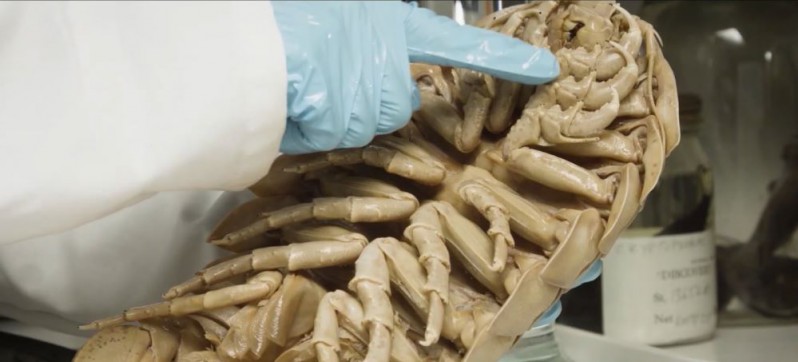 No! They're not giant bugs! Photo: YouTube screenshot
No! They're not giant bugs! Photo: YouTube screenshot
Giant Isopod or Bathynomus giganteus looks like a monster-creature from a bad science fiction movie. This giant isopod is among the strangest animals found in the deep sea. We can see his distant relative crawling in our garden but on a much smaller scale. Because of that, this insect-like creature is often called a sea pillbug and can be over 16 inches in length.
Their body is equipped with a hard shell divided into segments that make them simultaneously flexible and strong, just like with his terrestrial cousin, the pillbug. They have developed a large antenna to help them navigate the ocean floor due to faint light in the deep sea.
4. Euspinolia Militaris
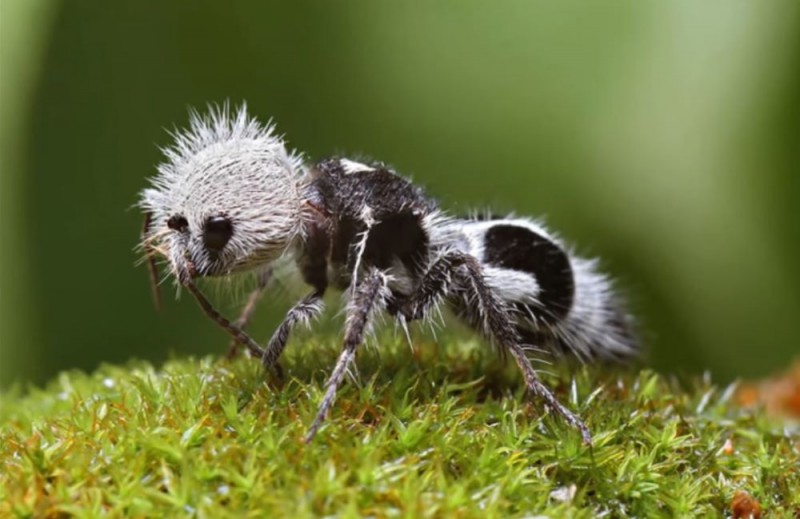 Panda ants aren't aggressive - just like the real cute pandas. Photo: YouTube screenshot
Panda ants aren't aggressive - just like the real cute pandas. Photo: YouTube screenshot
Euspinolia militaris is also referred to by the name Panda Ant because of black and white spots and body coloration. This species was discovered in 1938 in a Chile forest. Despite its popular name, Panda Ant is, in fact, not an ant at all but a wasp. A significant difference between sexes is that males have wings and females don't. During mating time, males lift females and proceed with mating airborne.
Panda ants are solitary and not aggressive species - just like the real cute pandas. They don't live in colonies or have nests, but they are parasitic, so they lay their eggs in an existing cocoon, where hatched young use other larvas as a food source. Panda Ants produce intense ultrasonic sounds in response to potential threats from predators.
3. Mantis shrimps
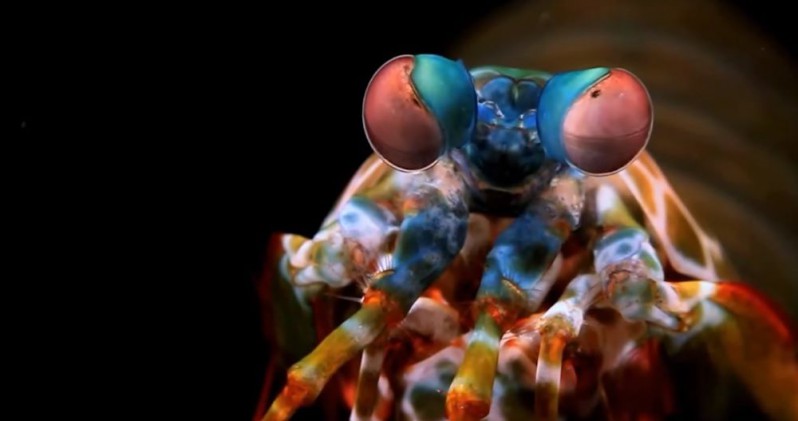 Each eye includes 12 photoreceptors that let them sense diverse types of color Photo: YouTube screenshot
Each eye includes 12 photoreceptors that let them sense diverse types of color Photo: YouTube screenshotMantis shrimps or stomatopods are spectacular-looking species. But, don't be fooled, as behind those incredible beautiful colors is a real predator. Mantis shrimps use their fluorescence as a signal for other trespassing shrimp or, in some cases, to attract mates. They typically grow around 3.9 inches in length but can reach up to 15 inches. The Mantis shrimp habitat is in the Pacific and Indian Oceans in shallow tropical and temperate waters.
Mantis shrimps come in two different types - Spearers and Smashers. Smashers strike with great power to stun and kill prey, while spearers use sharp forelimbs to capture and impale. In addition to such brutal weaponry, they possess incredibly complex compound eyes that can see in more wavelengths of color than even mammals.
2. Goblin sharks
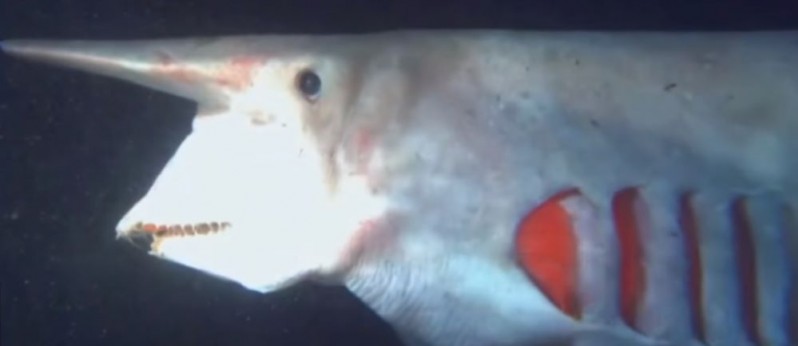 The name comes from its likeness to the mythical Japanese folklore goblin creature Photo: YouTube screenshot
The name comes from its likeness to the mythical Japanese folklore goblin creature Photo: YouTube screenshot
Goblin sharks are spotted mostly off Japan's coast and can be found in the Atlantic, Pacific, and Indian Oceans. They got their name for their likeness to the mythical Japanese folklore goblin creature. These strange-looking pink sharks with fang-like teeth and narrow snouts live mainly on the ocean floor. They can measure up to 460 pounds and grow 12 feet long.
The goblin shark is an ambush predator because it isn't a fast swimmer, and its prey is usually teleost fish such as dragon fishes and retails. Their long snout serves them as a sensor since it bears unique sensing organs called electroreceptors. With it, Goblin Shark is detecting the weak electric fields produced by other animals.
1. Condylura cristata
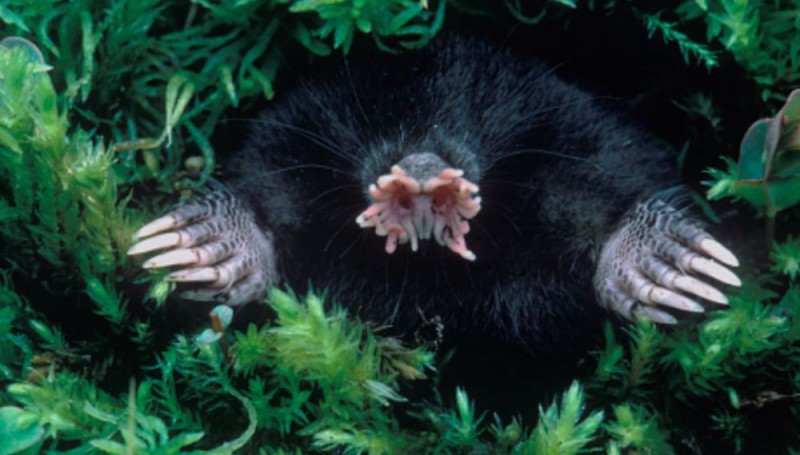 It looks like a mole with a tiny octopus attached instead of the head
It looks like a mole with a tiny octopus attached instead of the head
The star-nosed mole is among the most peculiar animals in the world. It's like a mole with a tiny octopus attached instead of the head. Condylura cristata possess a unique 'star' of 22 pink, fleshy tentacles. With those quickly bopping against the soil, it can touch up to 12 different places in a second. At the same time, nerve fibers send information fast into the mole's brain.
This sensor equipment is packed into a nose smaller than a fingertip, and it's five times more sensitive than human touch. They are hunting for prey in a waterlogged environment such as swamps and marshes. Finally, the star-nosed mole is one of two animals in the world that can smell underwater. To do that, they blow air bubbles and suck them back into the nose. Would it be cool if humans could do that?
So, what creature occupied your attention the most after this crazy top ten journey through our strange world? We can admit that every single one from the list is eccentric in its own way. While speaking of weird, there are even animals that drink and do drugs in the wild. How unimaginable is that?
Cover photo: Dorothea OLDANI/Unsplash